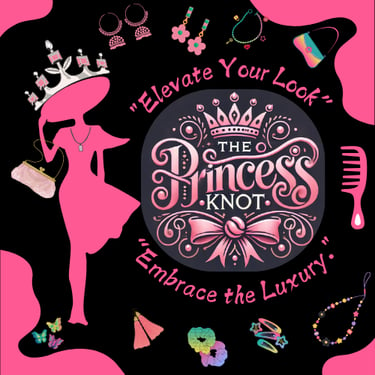"The Evolution of Bangles: From Ancient Traditions to Modern Fashion"
Team - The Princess Knot...!!!
12/1/20242 min read


Bangles, the rigid bracelets adorning wrists across various cultures, boast a history as rich and diverse as the materials from which they're crafted. From ancient civilizations to modern fashion statements, bangles have symbolized beauty, status, and cultural identity.
Ancient Origins
The earliest evidence of bangles dates back to around 2600 BC in the Indus Valley Civilization. Archaeologists unearthed a figurine, famously known as the "Dancing Girl," in Mohenjo-Daro (present-day Pakistan), adorned with bangles on her left arm, indicating their significance in early societies.
Beyond the Indus Valley, ancient Egyptians also wore bangles made from materials like glass, stone, and faience. These accessories were not merely decorative but often held religious and cultural significance.
Cultural Significance Across Regions
Indian Subcontinent
In the Indian subcontinent, bangles hold profound cultural importance:
Marital Symbolism: Traditionally, married women wear bangles as a sign of their marital status and to wish for their husbands' well-being.
Regional Variations:
Punjab: Brides don a set called chooda, comprising red and white bangles, symbolizing prosperity and fertility.
Bengal and Odisha: Married women wear shakha-pola, white bangles made from conch shells and red bangles made from coral, respectively.
Maharashtra: Green glass bangles are favored, representing fertility and new beginnings.
West Africa
In West African cultures, particularly among the Yoruba people, bangles known as manillas were used as a form of currency and held significant social value. These metal bracelets were often associated with wealth and status.
Materials and Craftsmanship
Bangles have been crafted from a myriad of materials, each adding to their unique appeal:
Metals: Gold, silver, and bronze bangles have been cherished for their durability and luster.
Glass: Particularly popular in regions like Firozabad, India, glass bangles are valued for their vibrant colors and delicate sound.
Lac: Made from a natural resin, lac bangles are known for their intricate designs and rich hues.
Shell and Ivory: In coastal areas, bangles made from seashells and ivory were common, often signifying purity and elegance.
Evolution into Modern Fashion
Today, bangles have transcended their traditional roles and have become global fashion accessories:
Contemporary Designs: Modern bangles incorporate materials like plastic, rubber, and stainless steel, catering to diverse aesthetic preferences.
Fashion Statements: Stacking multiple bangles of various styles and materials has become a popular trend, allowing individuals to express their unique personalities.
Cultural Fusion: Designers worldwide draw inspiration from traditional bangle designs, blending them with contemporary elements to create pieces that resonate across cultures.
From their ancient origins to their place in today's fashion landscape, bangles continue to be cherished symbols of beauty, culture, and personal expression. Their enduring appeal lies in their ability to adapt and evolve while maintaining a deep connection to their historical roots.
The Princess Knot
A Unit of NEHA TRADERS
Stylish accessories for every woman's wardrobe.
Quick Links
contact@theprincessknot.in
+91 83001 51443
Copyright © 2025 The Princess Knot | All rights reserved.


